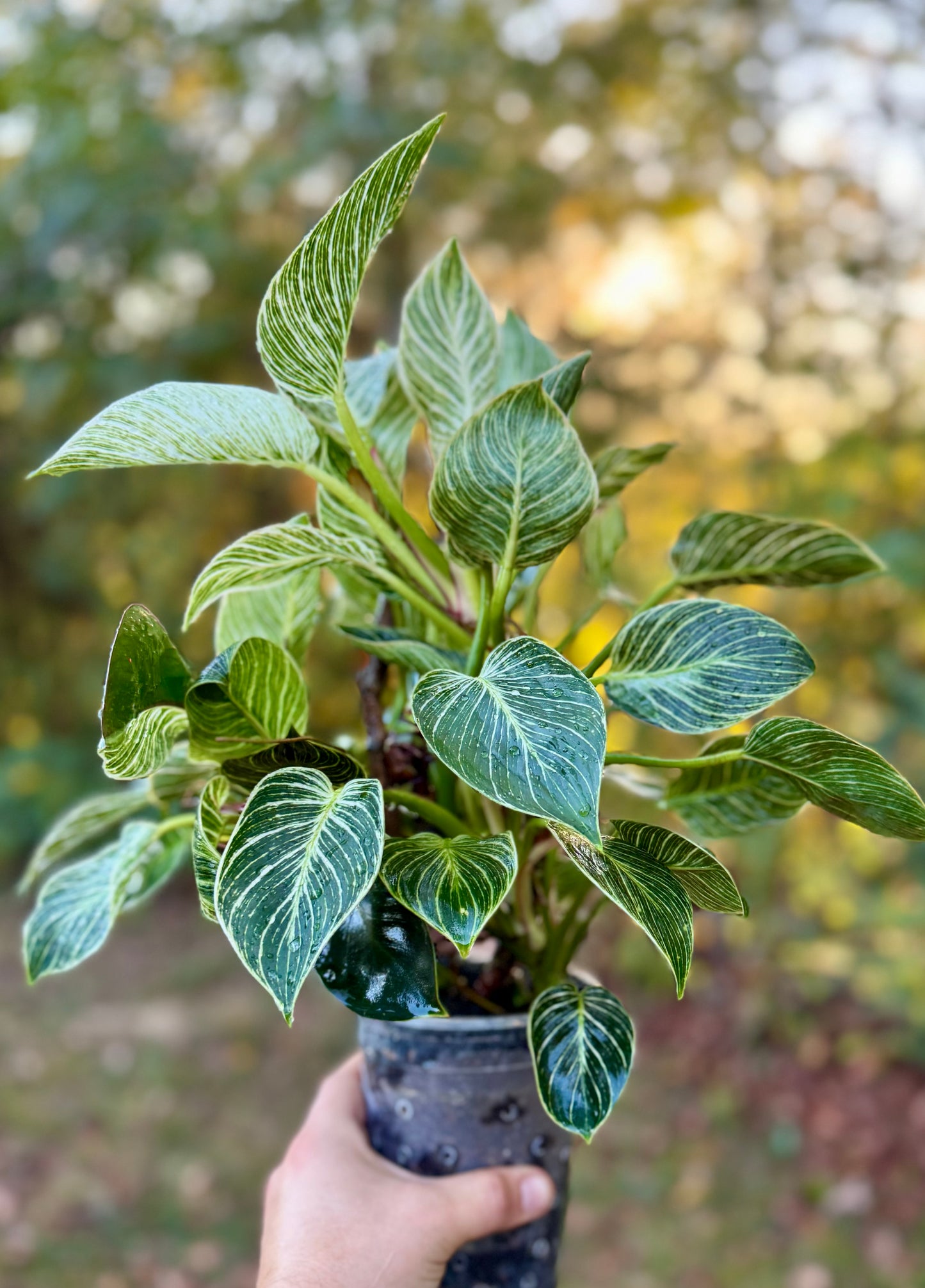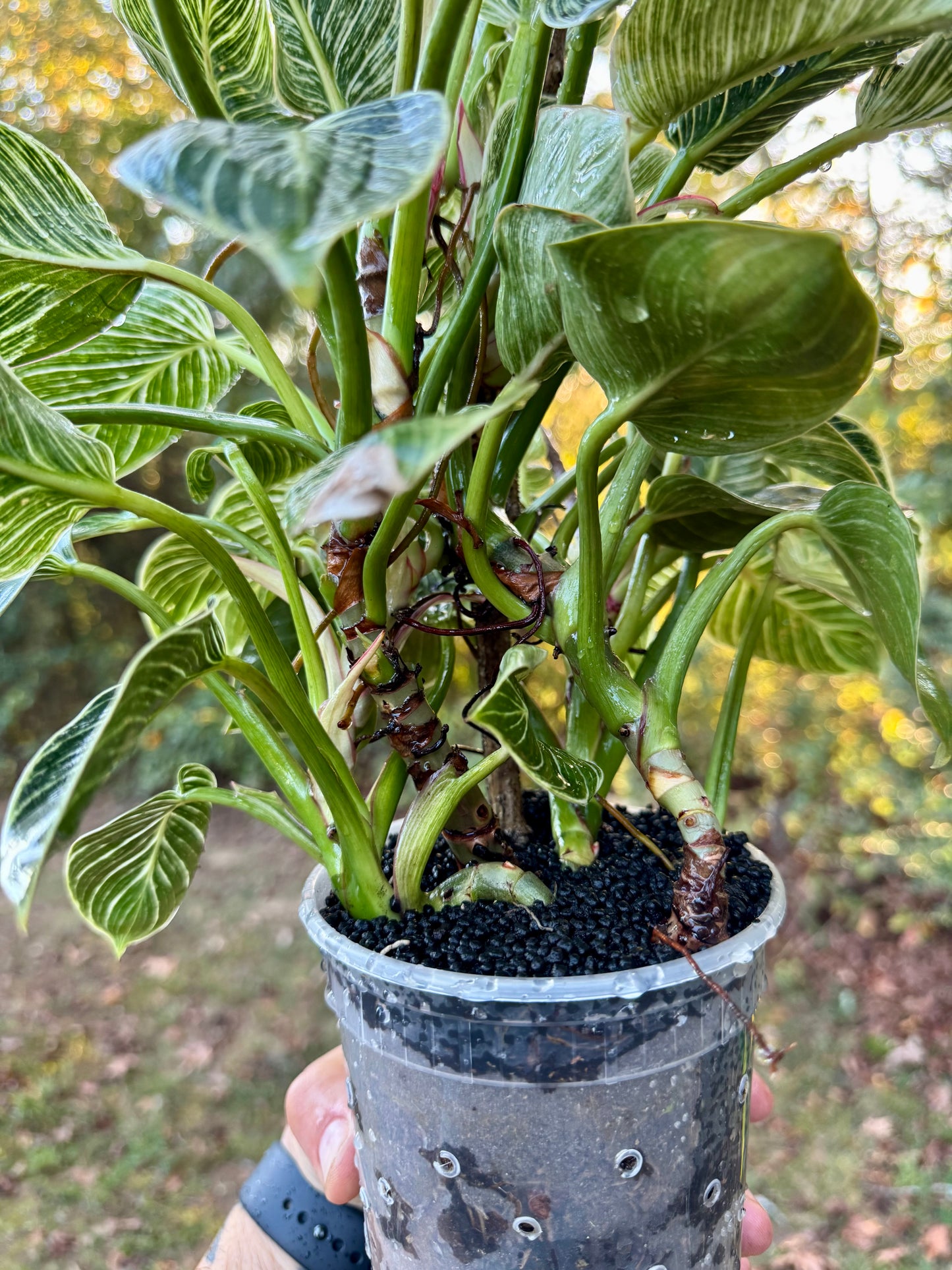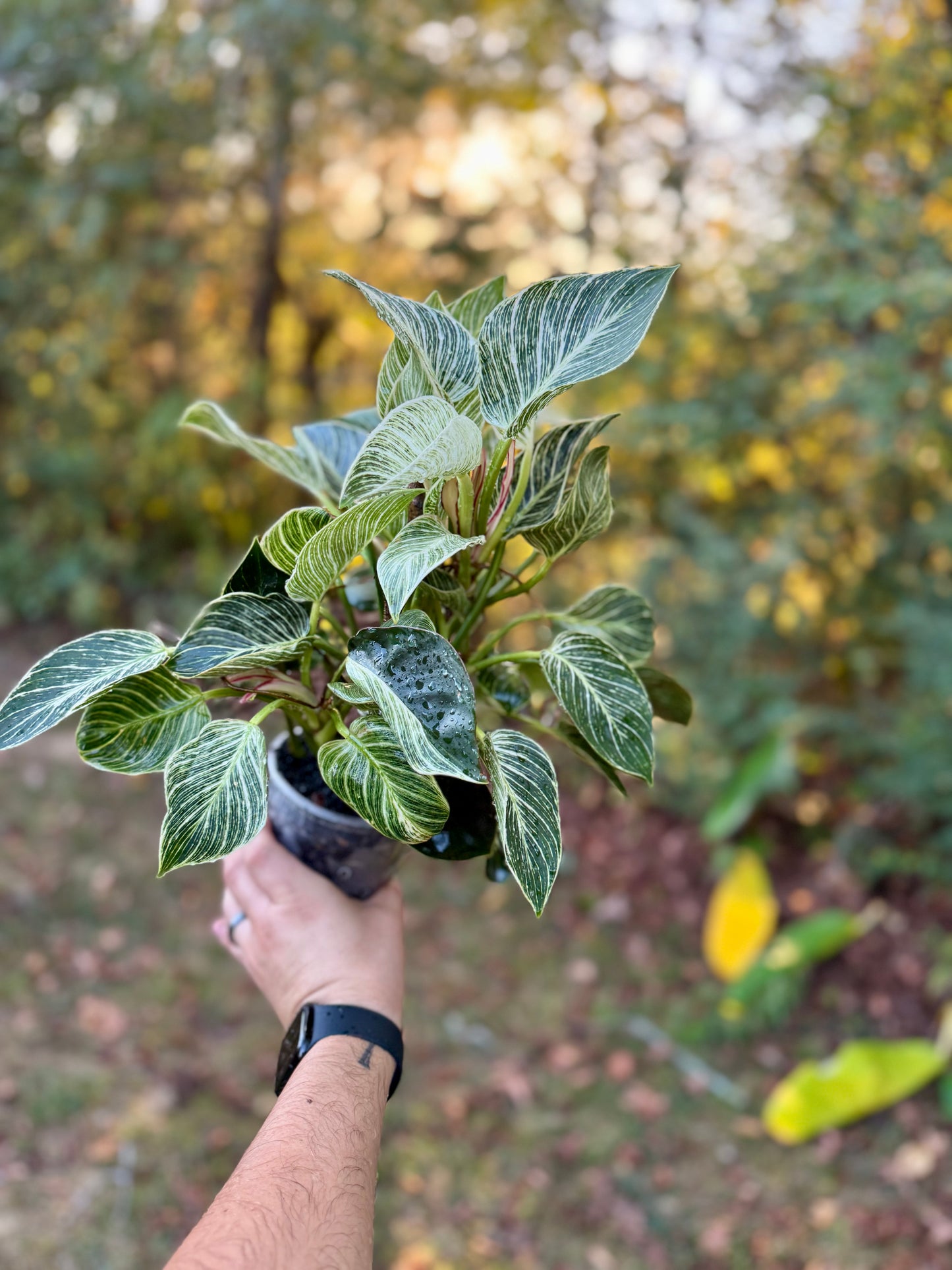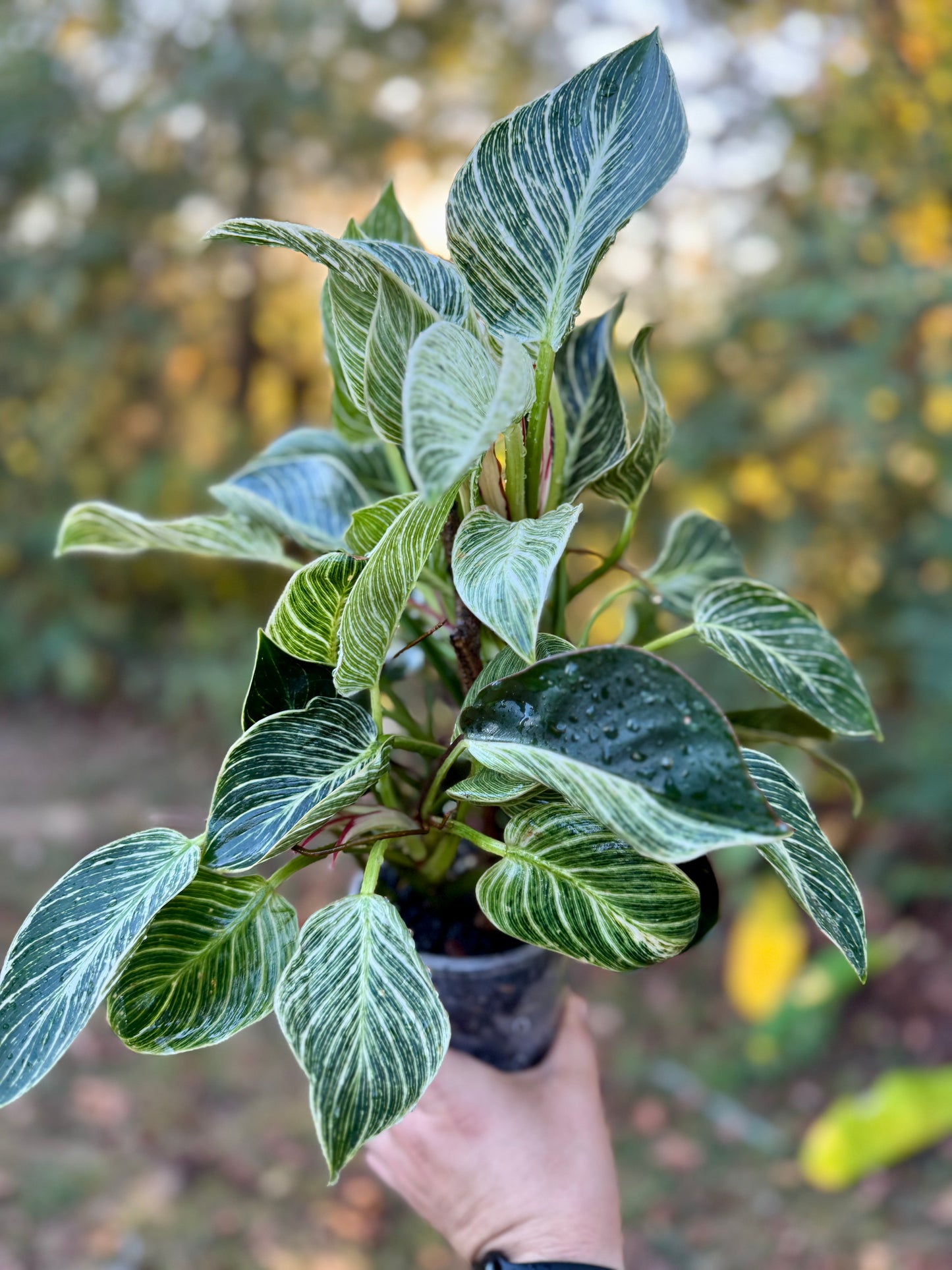Eden on Earth
New! LARGE Philodendron Birkin
New! LARGE Philodendron Birkin
Couldn't load pickup availability
This Birkin came straight from my hands — a bold beauty with five mature stems, each dressed in creamy pinstripes that look hand-painted by nature herself. Strong, rooted, and lush, this one’s ready to be the statement piece in your space.
The Ultimate Guide to Philodendron 'Birkin' Care
The Philodendron 'Birkin' is a trendy and exceptionally beautiful houseplant, admired for its glossy, dark green leaves that are adorned with creamy white to pale yellow pinstripes. What makes it fascinating is that the variegation becomes more pronounced as the leaf matures. It's a relatively compact, non-vining philodendron, making it a perfect statement piece for shelves and tabletops.
1. Understanding Your Plant
-
Scientific Name: Philodendron 'Birkin'
-
Origin: The 'Birkin' is a relatively new and unique hybrid, believed to be a spontaneous mutation of Philodendron'Rojo Congo'.
-
Growth Habit: It has a self-heading, upright growth habit. It does not vine or climb but grows from a central stem, producing a dense, bushy rosette of leaves.
2. Core Care Requirements
💡 Light
-
Key for Variegation: Bright, indirect light is essential for developing and maintaining the beautiful pinstripe variegation. An east-facing window is ideal. A spot near a west- or south-facing window, but shielded from direct sun, also works well.
-
Too Little: In lower light, the variegation will be less prominent, and the leaves may revert to a solid dark green.
-
Too Much: Direct, harsh sunlight will scorch the leaves, causing brown spots and fading the colors.
💧 Watering
-
When to Water: Water when the top 1-2 inches of the soil feel dry. 'Birkins' prefer consistently moist soil but are very susceptible to root rot if overwatered.
-
How to Water: Water thoroughly, allowing the excess to drain out completely. Never let the pot sit in a saucer of water.
-
Frequency: Check the soil every week, but only water when it's appropriately dry. You'll water less in the winter.
🌱 Soil
-
Perfect Mix: A well-aerated, fast-draining potting medium is crucial. An aroid-specific mix is best.
-
DIY Option: Combine 1 part standard potting mix, 1 part perlite, and 1 part orchid bark for an excellent homemade mix.
🌡️ Temperature & Humidity
-
Temperature: It thrives in average to warm household temperatures of 65-85°F (18-29°C). Protect it from cold drafts and temperatures below 55°F (13°C).
-
Humidity: It loves humidity! While it can tolerate average levels, it will flourish with a boost. Aim for 50-60% humidity. You can achieve this with a humidifier, pebble tray, or by grouping it with other plants.
3. Growth and Maintenance
🌿 Fertilizing
-
What to Use: A balanced liquid houseplant fertilizer.
-
How Often: Feed every 4 weeks during the spring and summer growing season. Dilute to half the recommended strength. Do not fertilize in the fall or winter. Over-fertilizing can damage the roots and affect the variegation.
✂️ Pruning
-
For Aesthetics: Pruning is generally not required for health but can be done to maintain a tidy appearance. Use sterile shears to remove any yellowed, brown, or dead leaves at the base of the stem.
-
Reverting Leaves: Occasionally, a 'Birkin' may produce a leaf with a reddish tinge or a solid green leaf (a throwback to its 'Rojo Congo' heritage). You can prune these leaves off to encourage more variegated growth, though it's not strictly necessary.
🧼 Cleaning
-
The broad leaves can accumulate dust. Gently wipe them with a soft, damp cloth every so often to keep them clean and help with photosynthesis.
🪴 Repotting
-
Frequency: Repot every 1-2 years, or when the plant looks too large for its pot and roots are starting to get crowded. A 12-inch plant is quite mature and may appreciate a refresh of soil even if not moving to a larger pot.
-
Choosing a Pot: Select a pot that is only 2 inches larger in diameter.
4. Troubleshooting Common Issues
-
Yellowing Leaves: This is most often a symptom of overwatering.
-
Loss of Variegation: The plant needs more bright, indirect light.
-
Brown, Crispy Leaf Edges: Usually a sign of low humidity.
-
Pests: Keep an eye out for common pests like spider mites, mealybugs, and thrips.
⚠️ A Note on Toxicity
-
Like all philodendrons, the 'Birkin' is toxic to pets and humans if ingested.








